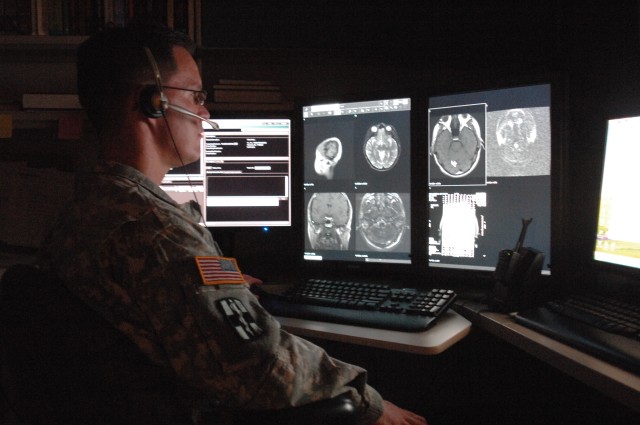FORT BRAGG, N.C. - Dr. Robert Gauer has been practicing medicine for 10 years at Womack Army Medical Center. One day this past summer, an overweight, retired veteran was a patient in the hospital and Gauer made a decision that could have seriously harmed his patient. Gauer selected the medication, sibutramine, a drug that helps you lose weight, to prescribe for the patient. He entered the prescription into his office computer. The medication order was sent electronically to the hospital's drug-order entry system.
Almost immediately, he received an alert message warning him the drug could interact dangerously with an anti-depressant the patient was already prescribed.
"There's no way I would have picked up on that unless the electronic system was in place," Gauer said.
Scenarios like this unfold every day at WAMC, providing a sobering visual of the role that information technology plays in transforming health care. Womack is one of the Army's most aggressive users of new technologies. Millions of dollars in technology investments have been made in WAMC and the outlying clinics.
Physicians can log onto an internal Web site to examine X-rays and laboratory results from a computer from any location in the facility. In addition, providers have the ability to access X-rays and lab results from their own home through a virtual private network system.
WAMC listened to their healthcare professionals and issued laptops, installed software and fine-tuned network technologies to their work rhythms.
The results can be seen in the statistics. Quality of patient care is increasing. Patient deaths are down and productivity is rising.
"We could never become one of the Army's top hospitals unless we spend time and effort in investing in new technology to support our patients as well as healthcare providers," said Lt. Col. David Broyhill, WAMC's chief information officer.
The most important piece of Womack's digital initiatives is the networked software that acts as the hospital's central nervous system. Nurses use wireless laptops on carts to log in to this system to record patients' symptoms and get all the information they need for patients during their stay in the hospital.
Physicians can log into the network via wireless laptops or personal computers to order prescriptions and lab tests. Nearly everything is linked into the system, from the automated pharmacy to the X-ray room.
(Editor's note: Dr. CristAfA3bal S. Berry-CabAfA!n, is a clinical statistician in the Informatics Branch at Womack Army Medical Center.)


Social Sharing